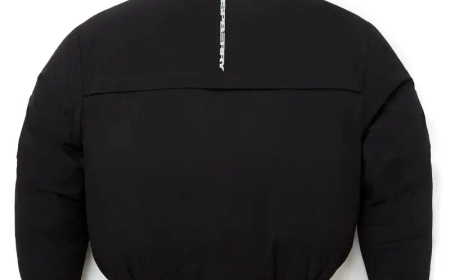How to Choose the Right Storage Bench for Your Home
A storage bench is one of the most versatile pieces of furniture you can add to your home. It’s functional, space-saving, and adds a touch of style to any room.

A storage bench is one of the most versatile pieces of furniture you can add to your home. Its functional, space-saving, and adds a touch of style to any room. Whether you need extra seating, hidden storage, or simply a charming accent, a storage bench can meet multiple needs at once. But with so many options on the market, choosing the right one can feel overwhelming.
This guide will walk you through the key factors to consider when selecting the perfect storage bench for your space, needs, and aesthetic.
1. Identify the Primary Purpose
Before diving into styles and materials, ask yourself: What do I want this storage bench to do?
Some common purposes include:
-
Entryway organization: Store shoes, umbrellas, and seasonal gear.
-
Bedroom storage: Keep extra bedding, pillows, or clothes.
-
Living room seating: Provide additional spots for guests while hiding clutter.
-
Toy storage: Tuck away childrens toys while offering a playroom seat.
-
Dining nook seating: Serve as a bench for a breakfast corner with under-seat storage.
Defining the primary purpose will guide many of your decisions, from size and structure to material and features.
2. Measure Your Space
One of the most common mistakes when buying furniture is misjudging the size. To avoid disappointment, carefully measure the area where the bench will go.
-
Length & Width: Make sure the bench will fit without blocking doorways or walkways.
-
Height: Consider whether it will be used as a seat. A typical bench seat height is 1820 inches.
-
Depth: Shallow benches work well in narrow hallways or small bedrooms, while deeper ones are ideal for lounging or large storage needs.
Its also smart to leave some clearance space around the bench, especially if youll be opening lids or drawers.
3. Choose the Right Style
Storage benches come in a variety of styles to match your homes decor. Think about the overall aesthetic of the room:
-
Modern/Contemporary: Clean lines, minimal design, often with neutral or bold solid colors.
-
Rustic/Farmhouse: Wood finishes, distressed paint, and cozy cushions.
-
Traditional: Upholstered seats, classic wood tones, and ornate details.
-
Industrial: Metal frames, reclaimed wood, and exposed hardware.
-
Scandinavian: Simple, functional designs with light wood and neutral fabrics.
Selecting a style that complements your existing decor ensures the bench blends in seamlessly rather than looking out of place.
4. Consider Material and Durability
The material affects not only the look and feel of your bench but also its durability and maintenance needs.
-
Wood: Classic and sturdy, wood benches can range from elegant oak to rustic pine. Solid wood is durable but heavier and often more expensive.
-
Metal: Offers a sleek, modern appearance and high durability. Best for industrial-style homes or outdoor use.
-
Upholstered: Adds comfort, especially for seating benches, but may require more maintenance to keep clean.
-
Wicker or Rattan: Lightweight and great for casual or coastal-themed rooms, though less durable for heavy use.
If your bench will be used frequentlyespecially by kids or in a high-traffic areaopt for easy-to-clean and tough materials.
5. Pick the Right Storage Type
Storage benches come with various configurations. Choosing the right one depends on what youll store and how often youll need access.
-
Flip-top lids: These open upward and offer a deep, trunk-like storage area. Ideal for storing bulkier items like blankets or shoes.
-
Drawers: Great for organizing smaller items like gloves, remotes, or craft supplies.
-
Cubbies/Shelves: Provide open or basketed compartments. Perfect for shoes, bins, or items you want easy access to.
-
Lift-up seats with hydraulic hinges: A safer option for families with children, as they prevent slamming.
Think about convenience. If youll be accessing items daily, choose a design that allows quick and easy access without a hassle.
6. Think About Comfort
If your storage bench will double as a seat, dont overlook comfort. Look for the following features:
-
Padded seats: A cushioned top makes the bench more comfortable to sit on, especially for longer durations.
-
Backrests and armrests: These are ideal if the bench will be used in dining or lounge areas.
-
Supportive structure: A well-built bench will provide stable seating without wobbling or sagging over time.
If the bench doesnt come with a cushion, consider buying one separately or making a DIY cushion to add comfort and a splash of color.
7. Match the Color Scheme
A storage bench can either blend in or stand out depending on your design preferences. Consider these color-matching ideas:
-
Neutral tones: Beige, gray, white, and black go with nearly everything and create a cohesive look.
-
Bold colors: Use your bench as an accent piece with bold colors like navy, emerald, mustard, or burnt orange.
-
Natural wood tones: Oak, walnut, or teak add warmth and timeless elegance.
Matching or complementing other furniture and decor elements will ensure visual harmony in your space.
8. Check the Weight Capacity
If your storage bench will be used for seating, be sure to check the weight capacityespecially if multiple people will use it at once. Most well-built benches support at least 250300 lbs, but larger or heavy-duty options can handle more.
For safety, always follow manufacturer guidelines regarding weight limits.
9. Evaluate Portability and Maintenance
Some benches are meant to stay put; others may need to be moved occasionally.
-
Lightweight materials: Easier to move but may lack durability.
-
Built-in handles or wheels: Great for flexible spaces or multipurpose rooms.
-
Maintenance needs: Wood might need polishing, upholstered benches might need vacuuming or spot-cleaning.
Choose a bench that fits your lifestyle and maintenance habits.
10. Set a Budget
Storage benches can range from $50 to over $500 depending on size, material, and features. Set a clear budget before you shop, but try to balance cost with quality.
Budget tips:
-
Look for sales during furniture or holiday events.
-
Consider secondhand or thrifted options you can refurbish.
-
DIY a custom storage bench to suit your exact needs and style.
Final Thoughts
A storage bench isnt just a place to sit or stash stuffit can be a beautiful and functional focal point in your home. By considering your needs, space, and style preferences, you can find a storage bench that not only looks great but also helps keep your home organized.
Whether youre upgrading your entryway, organizing your bedroom, or simply looking for a dual-purpose piece of furniture, the right storage bench can make a big difference.






















